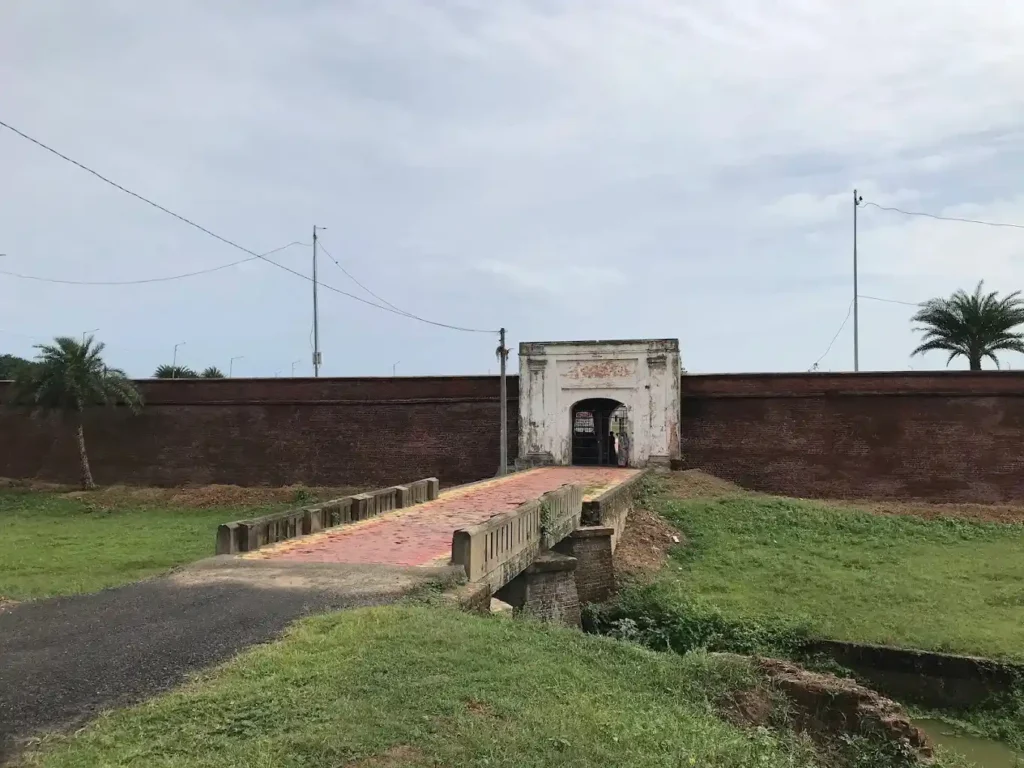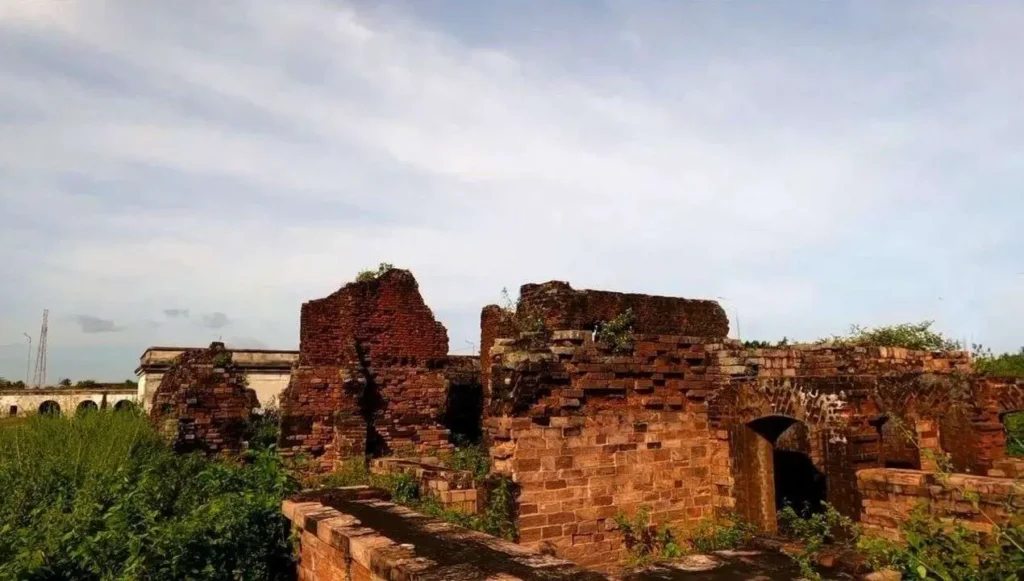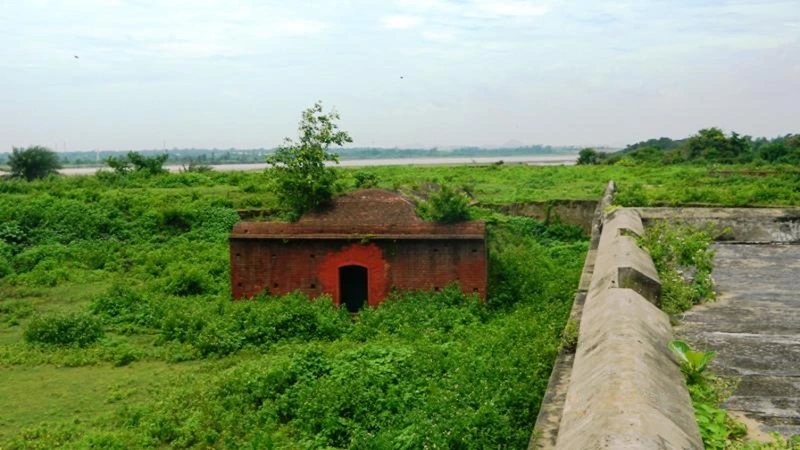
Table of Contents
Why Potagarh Fort Still Matters
Tucked away near the serene village of Ganjam, on the mouth of the River Rushikulya, lies Potagarh Fort, also known as the “Buried Fort.” Though now in ruins, its walls silently narrate stories of rulers, revolts, and cultural transitions. When I first visited this heritage site, I felt as if I had stepped into the pages of history—where the French, British, and Kutabshahi once ruled, and where secret passages whispered tales of escape and survival.
Potagarh Fort – A Historical Treasure of Ganjam

It was once the first Collectorate of Ganjam before the office shifted to Berhampur in 1815 and then to Chhatrapur in 1835. Its unique star-shaped design makes it distinct from other forts in Odisha.
A Cluster of Forts with Layers of History
Unlike a single fort, Potagarh clearly represents a cluster of forts built successively by different rulers:
- Kutabshahi Dynasty (17th Century): To begin with, Sultan Ibrahim Kutabshah or his commander Mahammed Khan possibly built it.
- French Rule (1753): Afterwards, Commander De Bussy directly controlled Ganjam from here and, as a result, left behind traces like French tombs.
- British Era (1768): Finally, Edward Costford, the first British Resident of Ganjam, actively expanded the fort with residential blocks and defense walls.
Architecture and Secrets of Potagarh Fort
Walking through the ruins, one can still admire the star-shaped walls and strong defensive structures. The compound wall, nearly 8 feet thick with a surrounding moat, was designed to withstand invasions.
Notable Features
- Three Residential Buildings: Each represents different architectural influences—Mahammadan, French, and British.
- Secret Passages: Two underground passages—one leading to the sea for escape, and another said to be used by the queen for bathing.
- Twin Magazine Houses: Indicators of the fort’s military importance.
- Massive Gates: Beautifully designed front and back gates, the rear one opening toward the river.
Potagarh Fort and the Revolts of Ganjam

Potagarh wasn’t just a military base; it was deeply tied to revolts and resistance. Its location made it central during the conflicts between the French and the British, and later during uprisings against colonial rule. Nearby areas like Srikakulam, Ichhapur, and Berhampur also witnessed struggles that shaped Odisha’s freedom story.
My Personal Experience at Potagarh Fort
Visiting Potagarh was surreal for me. Indeed, the silence around the fort was only broken by the sound of the Rushikulya River flowing nearby. As I walked through the ruined archways, I imagined soldiers guarding the walls, while queens used the hidden passages, and at the same time, foreign rulers planned their next move. Furthermore, the sense of standing on ground that has witnessed centuries of history truly gave me goosebumps. In the end, it is not just a heritage site—it is a time capsule.
People Also Ask
1. Where is Fort located?
In fact, it stands near Ganjam village in Odisha, and moreover, it lies at the mouth of the River Rushikulya.
2. Who built the Fort?
Historians debate its origin—some credit the Kutabshahi rulers in the 17th century, while others point to the French and later the British.
3. Why is Potagarh Fort called the "Buried Fort"?
It is called the “Buried Fort” because much of it remains covered with earth and hidden, symbolizing its buried history.
4. What is unique about the Fort?
Indeed, its star-shaped design, together with secret passages, and furthermore, the blend of Mahammadan, French, and British architecture, clearly make it unique.
5. Can tourists visit the Fort?
Yes, the fort is open to visitors. Although in ruins, it offers a rich historical experience and makes for a great heritage exploration.
Other Heritage Sites to Explore Near Potagarh

- Chilika Lake – Moreover, it stands as Asia’s largest brackish water lagoon.
- Srikakulam & Icchapur Mosques – Similarly, the Kutabshahi rulers built these mosques.
- Berhampur City – In addition, the city proudly showcases its silk sarees and colonial history.
Why You Should Visit Potagarh Fort
It is more than a set of ruins—it’s a living chapter of Odisha’s layered past. From the Kutabshahi dynasty to the British Raj, this fort embodies resilience, cultural fusion, and untold stories.
If you love exploring hidden heritage sites, Potagarh Fort in Ganjam should be on your travel bucket list. Step into history, walk through its ancient walls, and experience Odisha’s forgotten glory.


